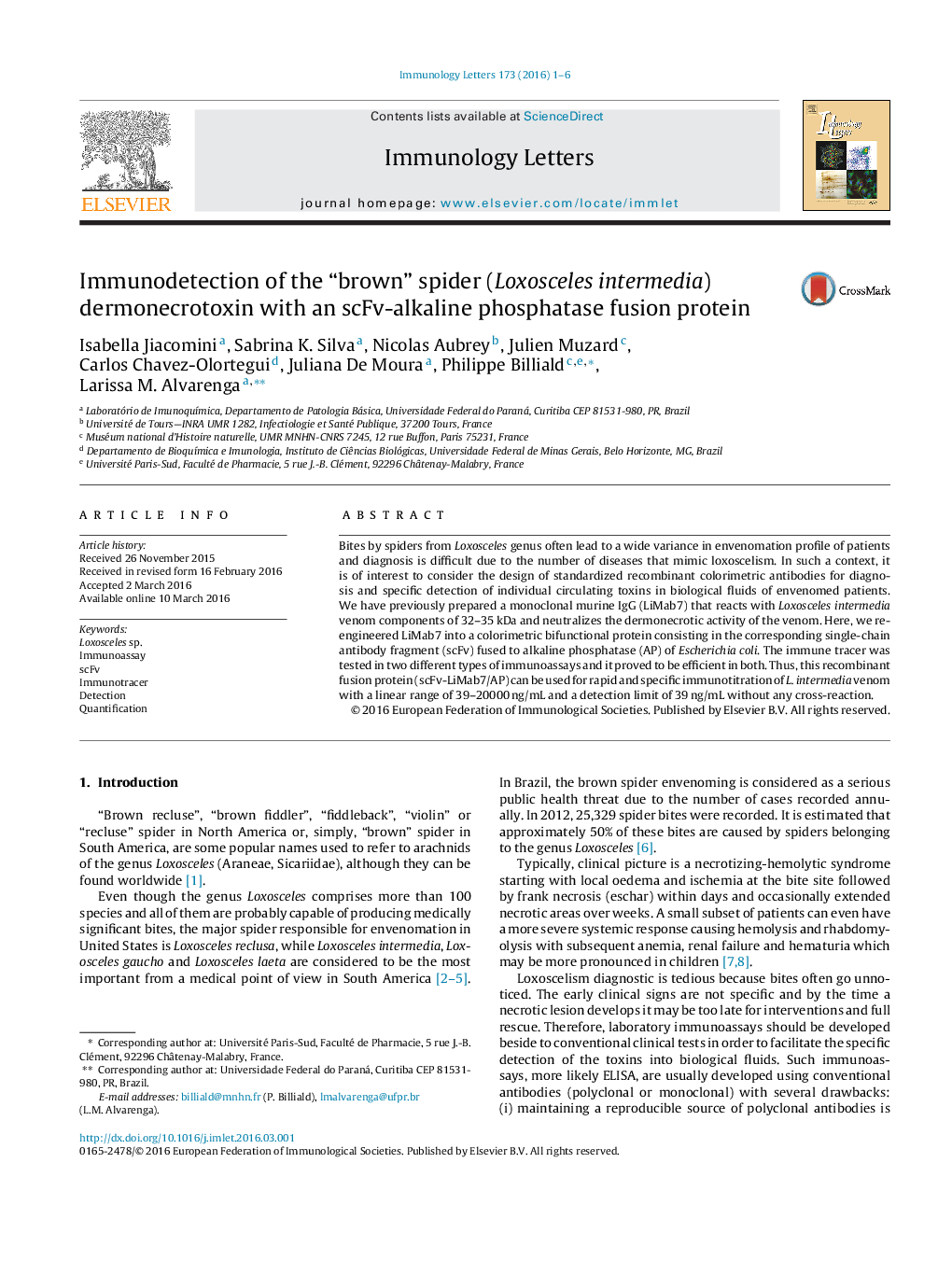| Article ID | Journal | Published Year | Pages | File Type |
|---|---|---|---|---|
| 3355275 | Immunology Letters | 2016 | 6 Pages |
•We engineered a recombinant colorimetric antibody for specific detection of Loxosceles intermedia toxin.•The scFv/alkaline phosphatase conjugate retained alkaline phosphatase activity and preserved antigen-binding specificity of the parental monoclonal IgG.•Immunoassays were developed which allow sensitive detection of the toxin.
Bites by spiders from Loxosceles genus often lead to a wide variance in envenomation profile of patients and diagnosis is difficult due to the number of diseases that mimic loxoscelism. In such a context, it is of interest to consider the design of standardized recombinant colorimetric antibodies for diagnosis and specific detection of individual circulating toxins in biological fluids of envenomed patients. We have previously prepared a monoclonal murine IgG (LiMab7) that reacts with Loxosceles intermedia venom components of 32–35 kDa and neutralizes the dermonecrotic activity of the venom. Here, we re-engineered LiMab7 into a colorimetric bifunctional protein consisting in the corresponding single-chain antibody fragment (scFv) fused to alkaline phosphatase (AP) of Escherichia coli. The immune tracer was tested in two different types of immunoassays and it proved to be efficient in both. Thus, this recombinant fusion protein (scFv-LiMab7/AP) can be used for rapid and specific immunotitration of L. intermedia venom with a linear range of 39–20000 ng/mL and a detection limit of 39 ng/mL without any cross-reaction.
